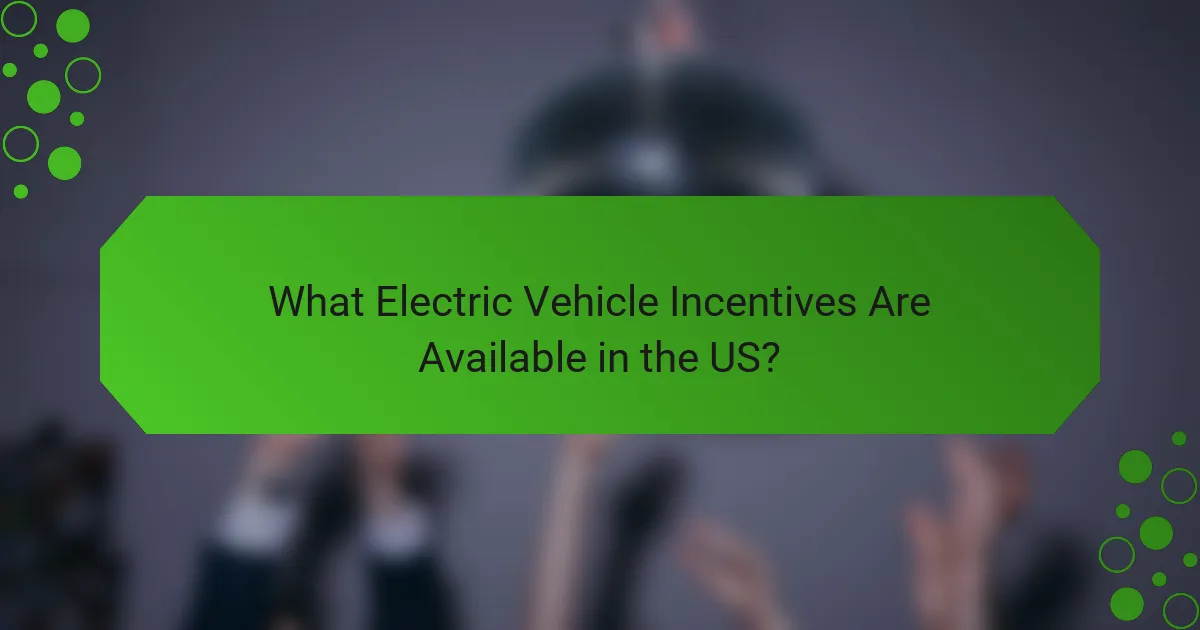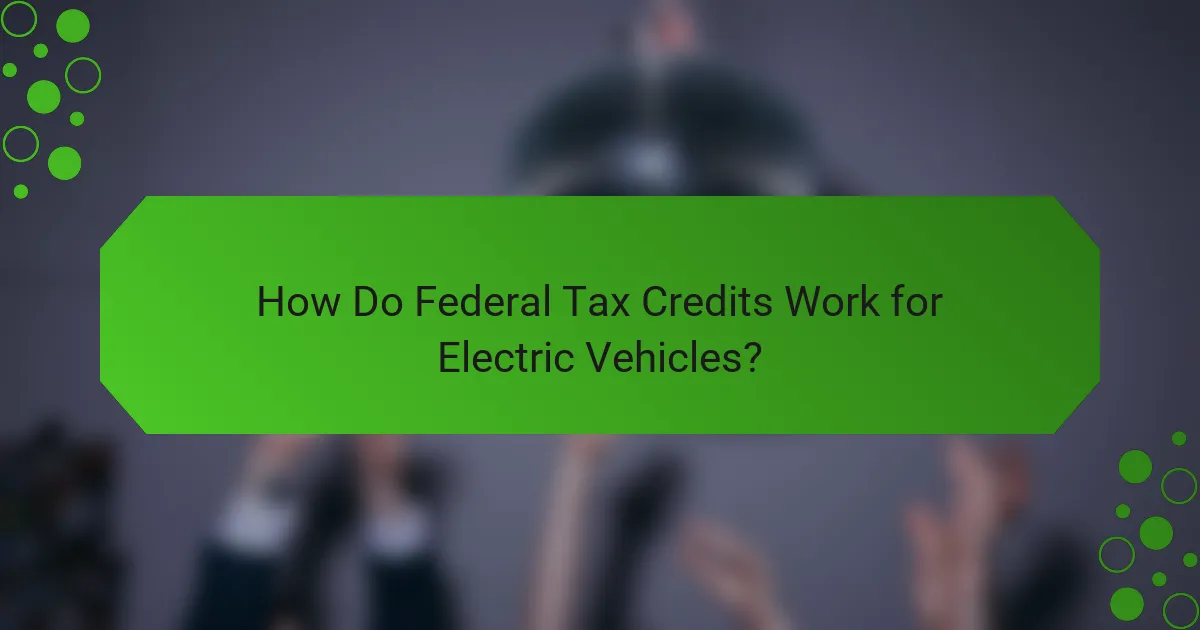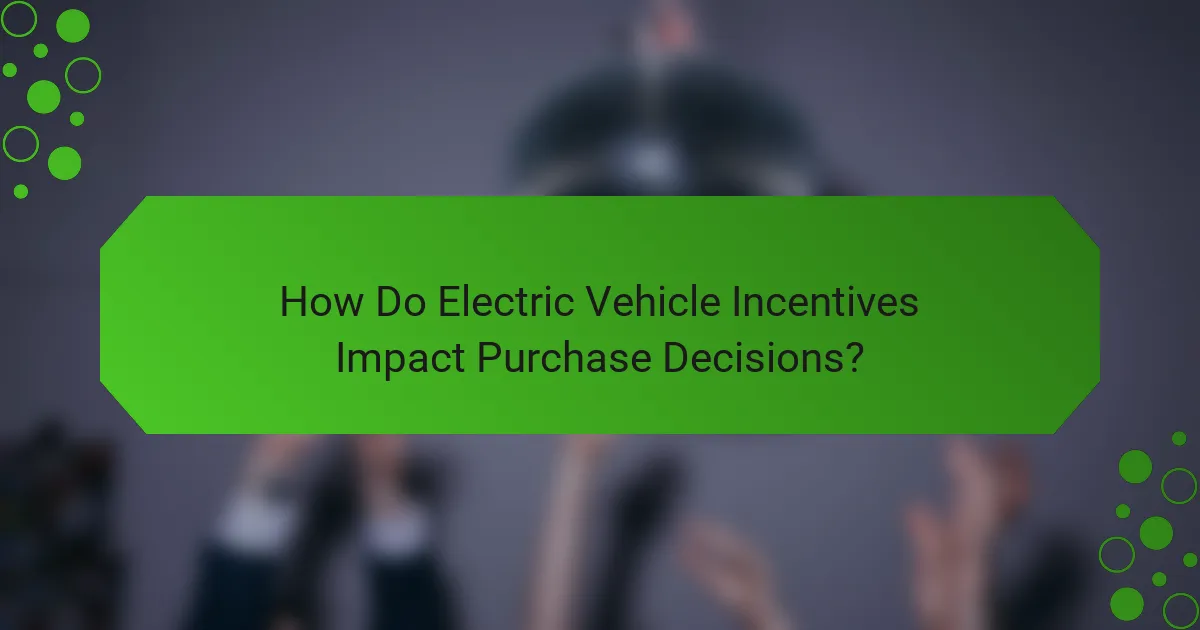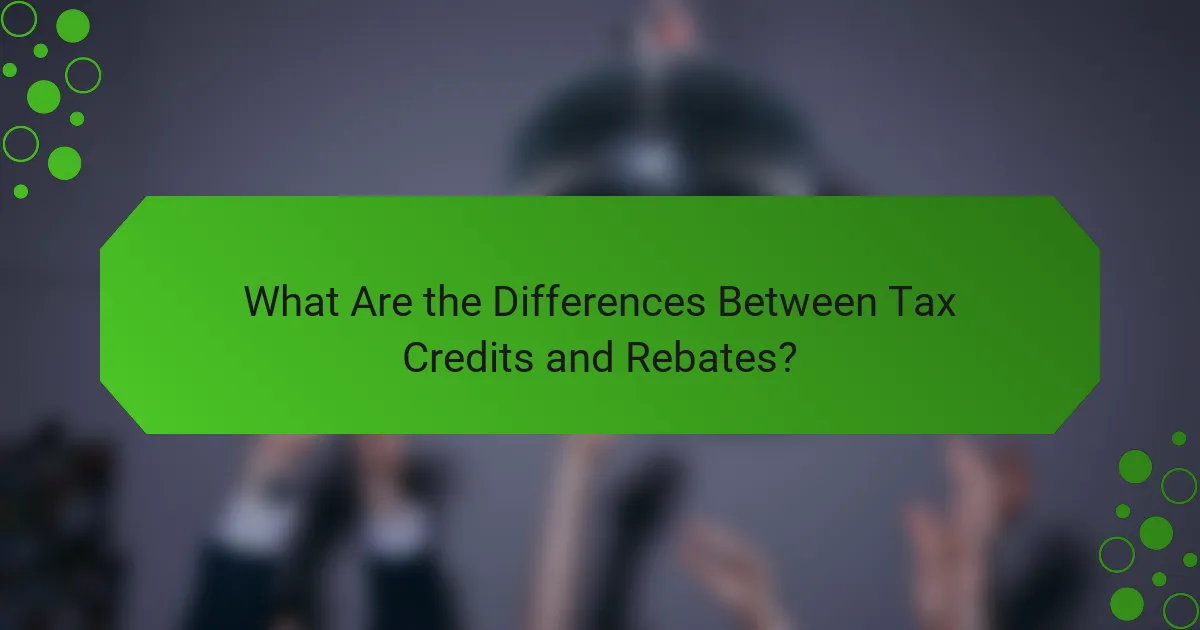Electric vehicle (EV) incentives in the US are designed to promote the adoption of cleaner transportation options while reducing costs for consumers. These incentives encompass federal tax credits, state-specific rebates, and various local programs, making EVs more affordable and accessible. States like California, New York, and Texas offer particularly attractive programs that can significantly lower the upfront costs of purchasing an electric vehicle.

What Electric Vehicle Incentives Are Available in the US?
In the US, various electric vehicle (EV) incentives exist to encourage adoption and reduce costs for consumers. These incentives include federal tax credits, state-specific rebates, local utility incentives, employer-sponsored programs, and grants from non-profit organizations.
Federal tax credits
The federal government offers tax credits for electric vehicle purchases, which can significantly lower the overall cost. As of now, eligible buyers can receive a credit of up to $7,500, depending on the vehicle’s battery capacity and the manufacturer’s sales volume.
To qualify, the vehicle must meet specific criteria, including being new and having a battery capacity of at least 4 kWh. Buyers should consult the IRS guidelines or a tax professional to ensure they meet all requirements and understand how to claim the credit.
State-specific rebates
Many states provide additional rebates for electric vehicle purchases, which can further reduce upfront costs. These rebates vary widely, with amounts typically ranging from a few hundred to several thousand dollars, depending on the state and the vehicle type.
To take advantage of state-specific rebates, consumers should check their state’s energy office or department of transportation website for details on eligibility, application processes, and deadlines. Some states may require proof of purchase or residency to qualify.
Local utility incentives
Local utility companies often offer incentives for electric vehicle owners, including rebates for home charging stations or reduced electricity rates during off-peak hours. These incentives can help lower the cost of charging an EV and make it more convenient for owners.
To find available utility incentives, consumers should contact their local utility provider or visit their website. It’s essential to understand the terms and conditions, as some programs may have limited funding or specific eligibility criteria.
Employer-sponsored programs
Some employers offer incentives for employees who purchase or lease electric vehicles, which can include financial assistance, charging station access, or even direct rebates. These programs aim to promote sustainability and reduce the carbon footprint of the workforce.
Employees interested in employer-sponsored programs should inquire with their human resources department to learn about available benefits and how to apply. Participation may require proof of vehicle purchase or lease agreements.
Non-profit organization grants
Various non-profit organizations provide grants to support electric vehicle adoption, particularly for low-income individuals or communities. These grants can help cover the cost of purchasing an EV or installing charging infrastructure.
To explore non-profit grants, individuals should research local and national organizations focused on clean transportation and sustainability. Applications may require documentation of financial need or project proposals outlining how the funds will be used.

How Do Federal Tax Credits Work for Electric Vehicles?
Federal tax credits for electric vehicles (EVs) reduce the amount of income tax you owe, incentivizing the purchase of cleaner vehicles. These credits can significantly lower the effective cost of an EV, making them more affordable for consumers.
Eligibility criteria
To qualify for federal tax credits, the vehicle must be fully electric or a plug-in hybrid and meet specific battery capacity requirements. Additionally, the manufacturer must not have exceeded a sales cap of 200,000 eligible vehicles, which can affect the credit amount available.
Buyers must also ensure they have a tax liability sufficient to utilize the credit, as non-refundable credits can only reduce tax owed to zero, not result in a refund.
Credit amounts for different models
The federal tax credit can range from $2,500 to $7,500, depending on the battery capacity of the vehicle. Generally, vehicles with larger battery capacities qualify for higher credits.
For example, a vehicle with a battery capacity of at least 16 kWh typically qualifies for the full $7,500 credit, while those with smaller batteries may receive a reduced amount. It’s essential to check the specific credit eligibility for each model before purchasing.
Claiming process
To claim the federal tax credit, buyers must complete IRS Form 8834 when filing their federal tax return. This form requires information about the vehicle, including the make, model, and VIN.
It’s advisable to keep all purchase documentation and consult a tax professional to ensure proper filing and maximize benefits. If you are unsure about your eligibility or the claiming process, consider reaching out to the IRS or a tax advisor for assistance.

Which States Offer the Best Electric Vehicle Rebates?
States like California, New York, and Texas provide some of the most attractive electric vehicle (EV) rebates and incentives. These programs can significantly reduce the upfront cost of purchasing an EV, making them more accessible to consumers.
California rebate program
California offers one of the most robust EV rebate programs in the country, known as the Clean Vehicle Rebate Project (CVRP). Eligible buyers can receive rebates ranging from a few thousand dollars for standard electric vehicles to higher amounts for low-income applicants.
To qualify, applicants must meet specific income limits and purchase or lease a new, eligible EV. The program is funded by the state and can run out of funds, so it’s advisable to apply early in the fiscal year.
New York EV incentives
New York provides several incentives for electric vehicle buyers, including the Drive Clean Rebate program. This program offers rebates of up to $2,000 for eligible EV purchases, depending on the vehicle’s battery capacity.
Additionally, New York residents may benefit from federal tax credits, which can further reduce the overall cost. It’s important to check the latest eligibility requirements and rebate amounts, as these can change annually.
Texas electric vehicle grants
Texas has a variety of incentives for electric vehicle purchasers, including the Texas Emissions Reduction Plan (TERP), which offers grants for EVs. The amount can vary, but grants typically range from a few hundred to several thousand dollars based on the vehicle type and local program availability.
Potential buyers should also explore local utility company incentives, as many offer rebates for charging equipment or additional savings for EV owners. Always verify the current status of funding and eligibility to maximize benefits.

What Are the Requirements for State Incentives?
State incentives for electric vehicles (EVs) typically require applicants to meet specific criteria related to residency, vehicle type, and the application process. Understanding these requirements can help potential buyers maximize their benefits when purchasing an EV.
Residency requirements
Most state incentive programs require applicants to be residents of the state offering the incentives. This often means providing proof of residency, such as a driver’s license or utility bill. Some states may have additional stipulations, such as maintaining residency for a certain period after receiving the incentive.
It’s essential to check the specific residency requirements in your state, as they can vary significantly. For example, some states may only offer incentives to residents who have registered their vehicle within state lines.
Vehicle eligibility
Eligibility for state incentives usually depends on the type of electric vehicle being purchased. Many programs specify that only new or certain used electric vehicles qualify, and they may have restrictions on the vehicle’s price or battery capacity. For instance, some states may only incentivize vehicles with a battery capacity above a certain threshold.
Additionally, vehicles must often meet specific emissions standards to qualify. It’s advisable to consult your state’s program details to ensure your vehicle meets all necessary criteria before applying.
Application process
The application process for state incentives generally involves submitting an application form along with required documentation, such as proof of purchase and residency. Some states allow applications to be submitted online, while others may require paper submissions.
To streamline the process, gather all necessary documents beforehand, including your vehicle’s VIN and purchase agreement. Be mindful of deadlines, as some incentives are available on a first-come, first-served basis or have limited funding.

How Do Electric Vehicle Incentives Impact Purchase Decisions?
Electric vehicle incentives significantly influence purchase decisions by reducing the overall cost and enhancing the appeal of electric vehicles (EVs). These incentives can take the form of tax credits, rebates, or state programs that lower the financial barrier for consumers considering an EV.
Cost savings analysis
Cost savings from electric vehicle incentives can be substantial, often ranging from a few thousand to several thousand dollars. For example, federal tax credits in the United States can provide up to $7,500, while various states offer additional rebates that can further decrease the purchase price.
When evaluating the total cost of ownership, consider not only the initial savings from incentives but also the lower operating costs associated with EVs. Electricity is typically cheaper than gasoline, and maintenance costs are often lower due to fewer moving parts in electric drivetrains.
Long-term benefits
Long-term benefits of electric vehicle incentives extend beyond immediate savings. Many consumers find that the reduced fuel and maintenance costs can lead to significant savings over the lifespan of the vehicle, often amounting to tens of thousands of dollars.
Additionally, as more states implement stricter emissions regulations, owning an EV can provide peace of mind regarding future compliance costs. Some regions may also offer perks such as access to carpool lanes or reduced registration fees, enhancing the overall value of owning an electric vehicle.

What Are the Differences Between Tax Credits and Rebates?
Tax credits and rebates are both financial incentives aimed at reducing the cost of electric vehicles, but they operate differently. A tax credit reduces the amount of tax owed, while a rebate provides a direct cash payment or discount after purchase.
Tax credit definition
A tax credit is an amount that taxpayers can subtract directly from the taxes they owe to the government. For electric vehicles, this means that if you qualify, you can reduce your tax liability by a specific dollar amount, often ranging from a few thousand to several thousand dollars, depending on the vehicle and local regulations.
For example, in the United States, certain electric vehicles may qualify for federal tax credits up to $7,500. However, eligibility can depend on factors such as the manufacturer’s sales volume and the buyer’s tax situation.
Rebate definition
A rebate is a partial refund given to the buyer after the purchase of an electric vehicle. Unlike tax credits, which reduce tax liability, rebates provide immediate financial relief by lowering the purchase price or offering cash back after the transaction.
Rebates can vary significantly by state or local programs, often ranging from a few hundred to several thousand dollars. For instance, some states may offer rebates of up to $5,000 for electric vehicle purchases, which can be claimed at the time of sale or through a post-purchase application process.
